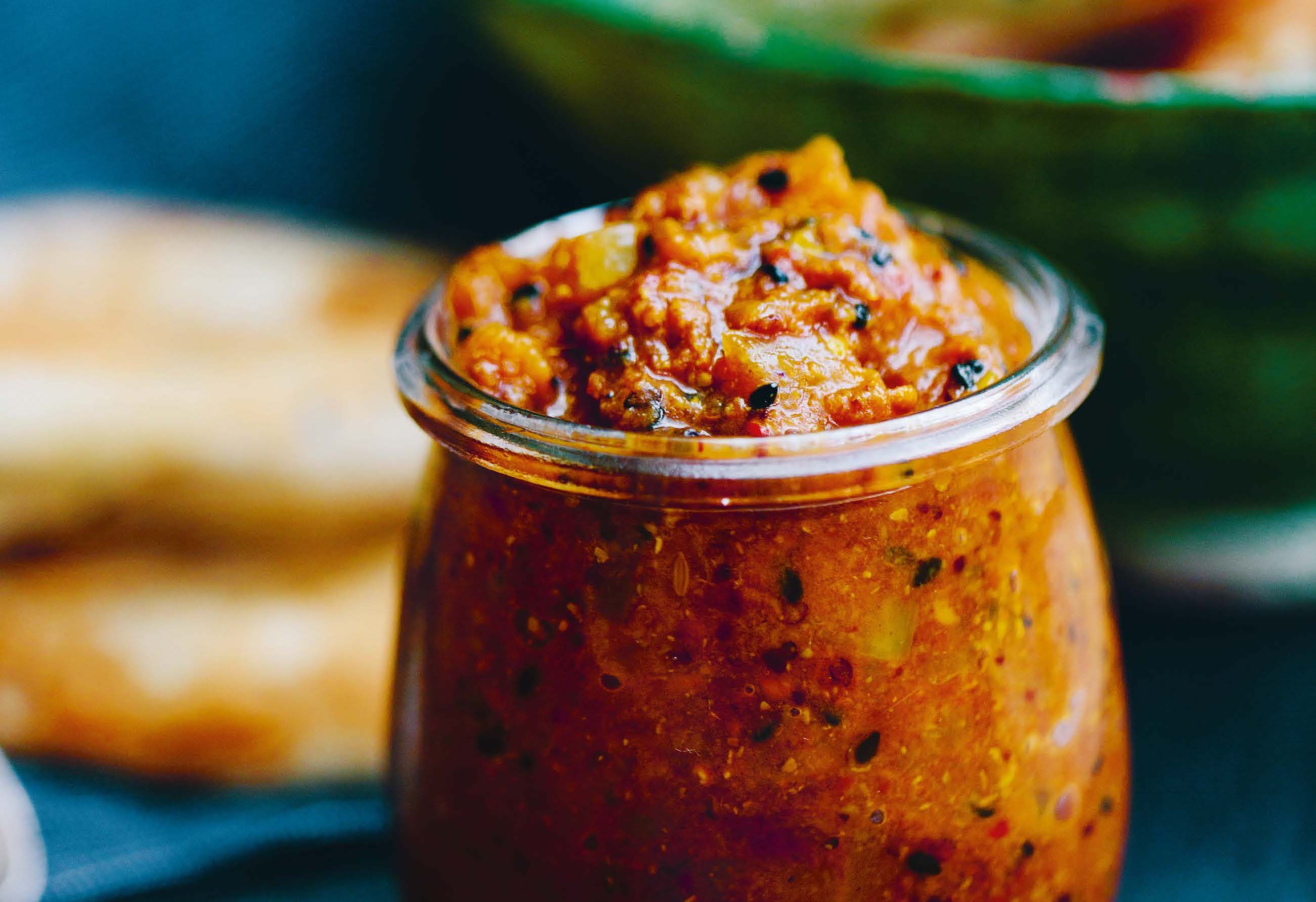My earliest memories of chutney were of my grandma putting a mysterious mason jar of weird stuff full of raisins on the dinner table. I never knew what to do with it so I didn’t give it the time of day.
As an adult, I spent a bit of time cooking and eating in the UK, where chutney is an absolute staple.
No cheese plate is complete without something pickled, or some type of sweet savoury spiced preserve. Hang out with me while I make my fave Grilled Cheese and Chutney Sandwich!
At the farm shop where I worked, we made giant batches of chutney every week. It was the easiest way to deal with all the fruit and veg that needed to be used up.
We used apples, pears, peppers, eggplant, even bananas. If it was looking sad, it went into the chutney pot. This basic chutney recipe adapted to anything we threw at it. It’s truly amazing.
Every fall I make a big batch with whatever fruit I can find falling off the trees, and I give jars of it to my friends. I don’t even mind if they just stare at it in their cupboard all year. It’s a comfort to me just knowing it’s kicking around.
Chutney is a condiment of chopped fruits, vinegar, spices, and sugar cooked into a chunky spread. Although it is best known as originating in India, chutney is famous worldwide, often transformed to suit local tastes. While most chutneys are on the spicy side, it’s easy to adjust the heat factor if you make it at home.

How to make chutney – a few guidelines
- Always include onions, apples and raisins (or some kind of dried fruit).
- Don’t go too crazy on the spices
- Don’t burn it.

More of a formula than a recipe
The basic chutney recipe I’ve drafted up here is more of a formula than a recipe, and it will get you pretty far in your chutney-making endeavours.
Get creative in choosing which fruit and veg you use, as well as which types of sugar, vinegar and spices you want.
The sugar can be white or brown, and you can use almost any vinegar under the sun. I would probably steer clear of Balsamic, but apple cider, malt, red wine are all contenders. I’d stick with something on the cheap side though because you’re using a lot of it and the flavour will mostly get lost in the shuffle.
Where spices are concerned I tend to always use some bay leaves and black peppercorns in a cheesecloth sack. I also include various combos of powders like ginger, coriander, cardamom, cinnamon, allspice, cloves, cayenne, you name it.
The next step is simple. Throw everything into a pot and cook slowly for an hour and a half to two hours. This formula can be doubled or tripled with no problem. Keep in mind that it might take longer to cook depending on the size of your pot.
3 Easy Chutney Recipe | Sweet and Spicy | Hungry for Goodies
FAQ
What makes something a chutney?
What Flavour is chutney?
Is chutney sauce supposed to be hot or cold?
What’s the difference between chutney and relish?
Is chutney spicy?
Chutney is a condiment of chopped fruits, vinegar, spices, and sugar cooked into a chunky spread. Although it is best known as originating in India, chutney is famous worldwide, often transformed to suit local tastes. While most chutneys are on the spicy side, it’s easy to adjust the heat factor if you make it at home.
What is Indian chutney?
Chutney is a sweet, tangy, rich, spicy sauce that’s popular all over the world, particularly in India and the UK. Indian chutneys Indian chutneys are traditionally served on the side of curries or as a dip for spiced snacks. In fact, chutneys served in India differ quite a bit to those served in the UK and the US.
What is chutney & how does it work?
What Is Chutney? Chutney is a condiment of chopped fruits, vinegar, spices, and sugar cooked into a chunky spread. Although it is best known as originating in India, chutney is famous worldwide, often transformed to suit local tastes.
Is chutney a condiment?
Chutney is a condiment with a confusing identity—something like relish, something like jam, and served with everything from Indian curries to grilled cheese. Here’s what you need to know about the wide world of chutney.
